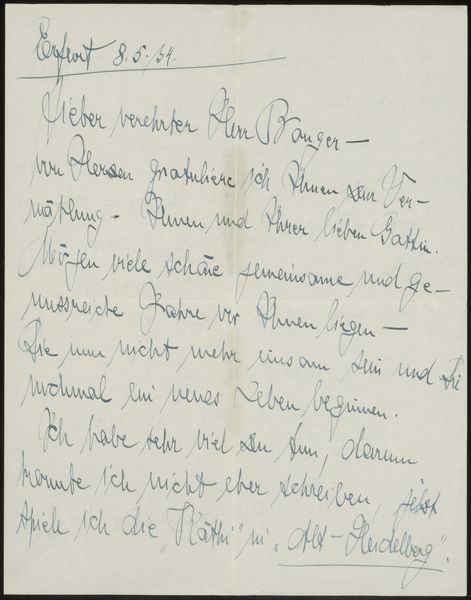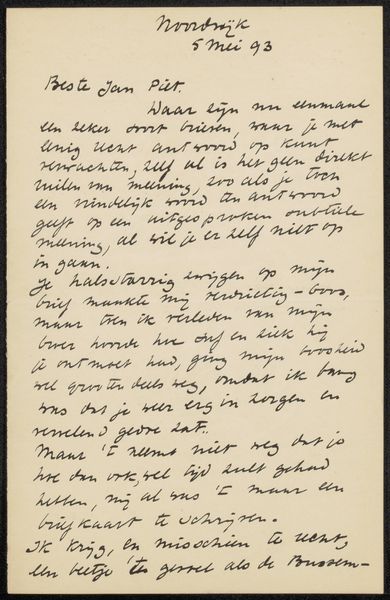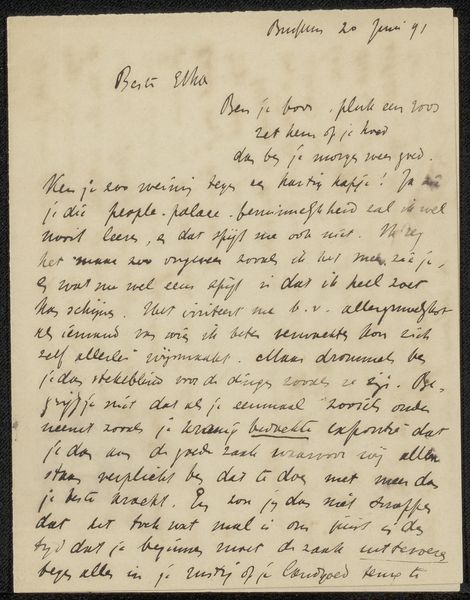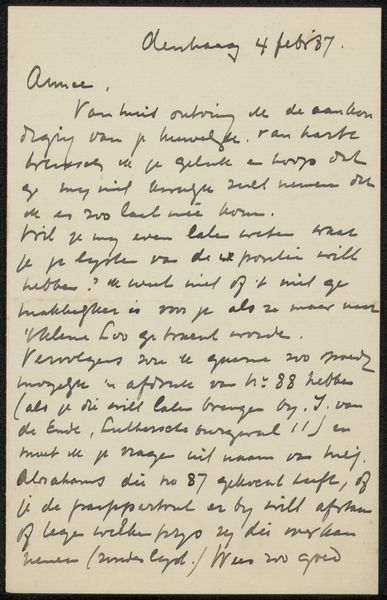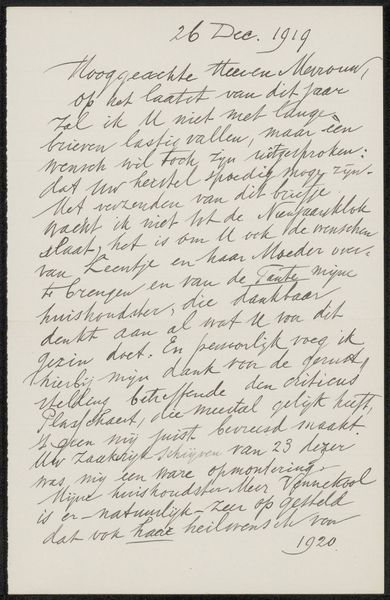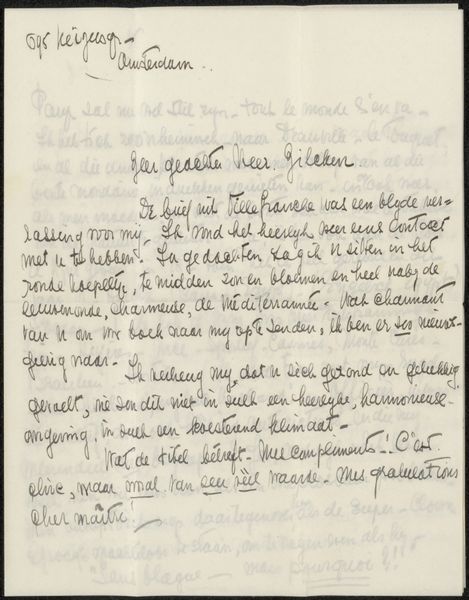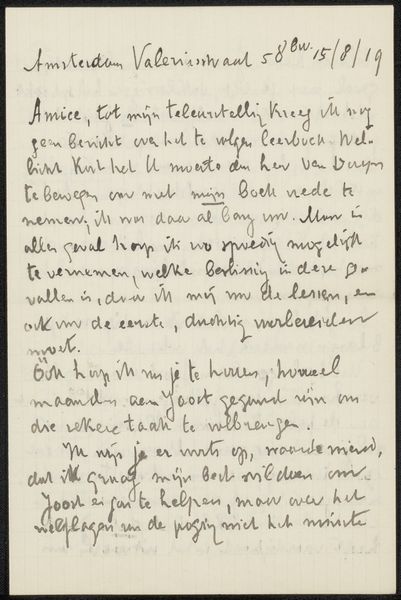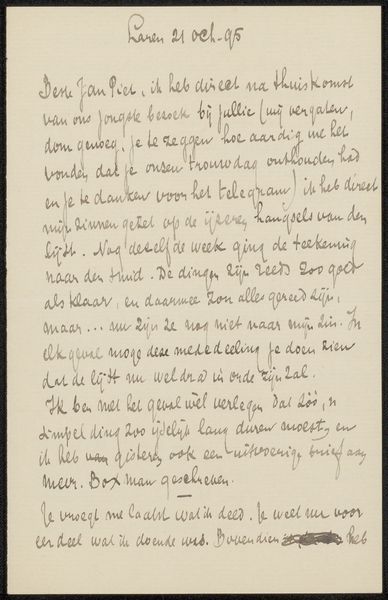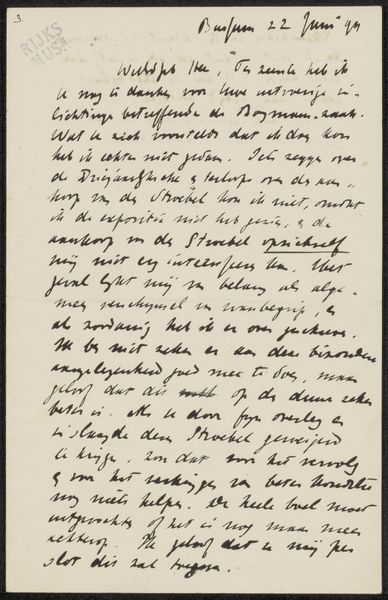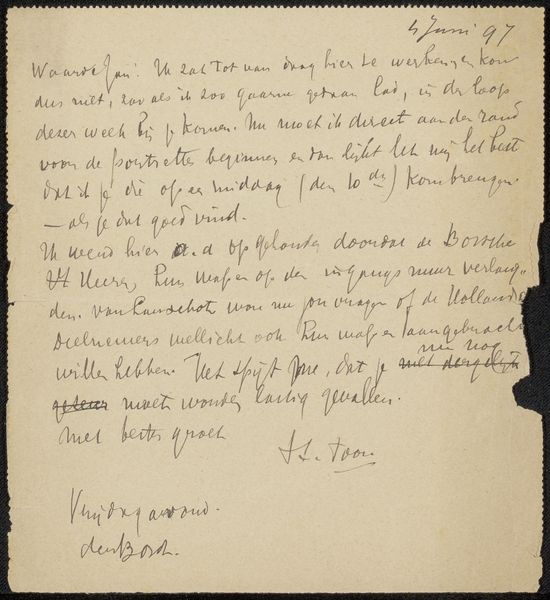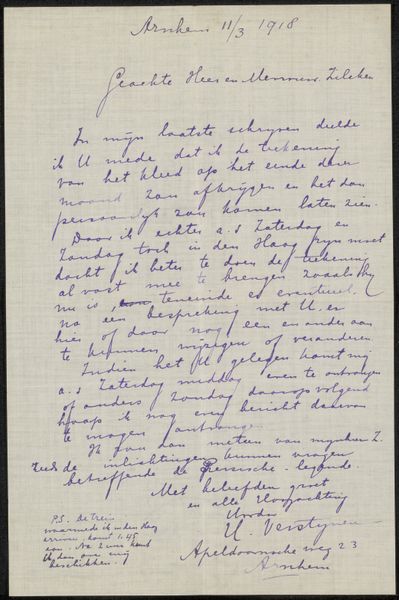
drawing, paper, ink, pen
#
drawing
#
hand-lettering
#
hand drawn type
#
hand lettering
#
paper
#
personal sketchbook
#
ink
#
hand-drawn typeface
#
ink drawing experimentation
#
pen-ink sketch
#
pen work
#
sketchbook drawing
#
pen
#
sketchbook art
Copyright: Rijks Museum: Open Domain
Curator: Here we have "Brief aan Andries Bonger," or "Letter to Andries Bonger," possibly from 1934, by Käthe Wintzer. It appears to be ink on paper. Editor: Immediately, I'm struck by how personal this feels. The cursive script creates a sense of intimacy, almost like eavesdropping on a private conversation. It seems urgent, hastily written. Curator: That's quite perceptive. The act of letter-writing in this period was significant. It wasn’t merely correspondence but a vital link, especially for someone like Wintzer. Personal connections helped them to maintain identities and express themselves under complex social circumstances. Editor: The ink, the pressure of the pen on paper… you can almost feel Wintzer's hand moving across the page. Consider how her physical process affects the look and therefore, the tone, of her sketch-letter. It’s all so immediate and present. Curator: Indeed. The very material choices underline her commitment to the recipient and emphasize their continued presence, maybe in difficult times. And the style and handwriting themselves became forms of artistic expression outside formal settings. Editor: Looking closely, I’m thinking about Wintzer’s hand. The directness, of literally transferring thought to the page—it connects us to the author in a deeply physical way that manufactured printing would hide. You notice things when you have the unmediated presence of pen strokes. Curator: Absolutely. This piece makes us think about how artworks in general and specifically her sketchbooks or handwritten letters were spaces to experiment but also sustain personal networks. These connections arguably supported creativity but equally may have determined whether, where, and how women artists could work. Editor: Thinking about materiality and intention, it's impossible not to ask questions about preservation: how do we maintain access to fragile material evidence like this letter and keep such histories alive and accessible? Curator: That's a question we as curators grapple with daily. Preserving these kinds of personal documents opens pathways to reinterpreting women's contributions. Editor: A letter like this reframes art history for me—it helps us understand artwork's deep contexts through material evidence and illuminates the importance of the everyday for creative practitioners.
Comments
No comments
Be the first to comment and join the conversation on the ultimate creative platform.
